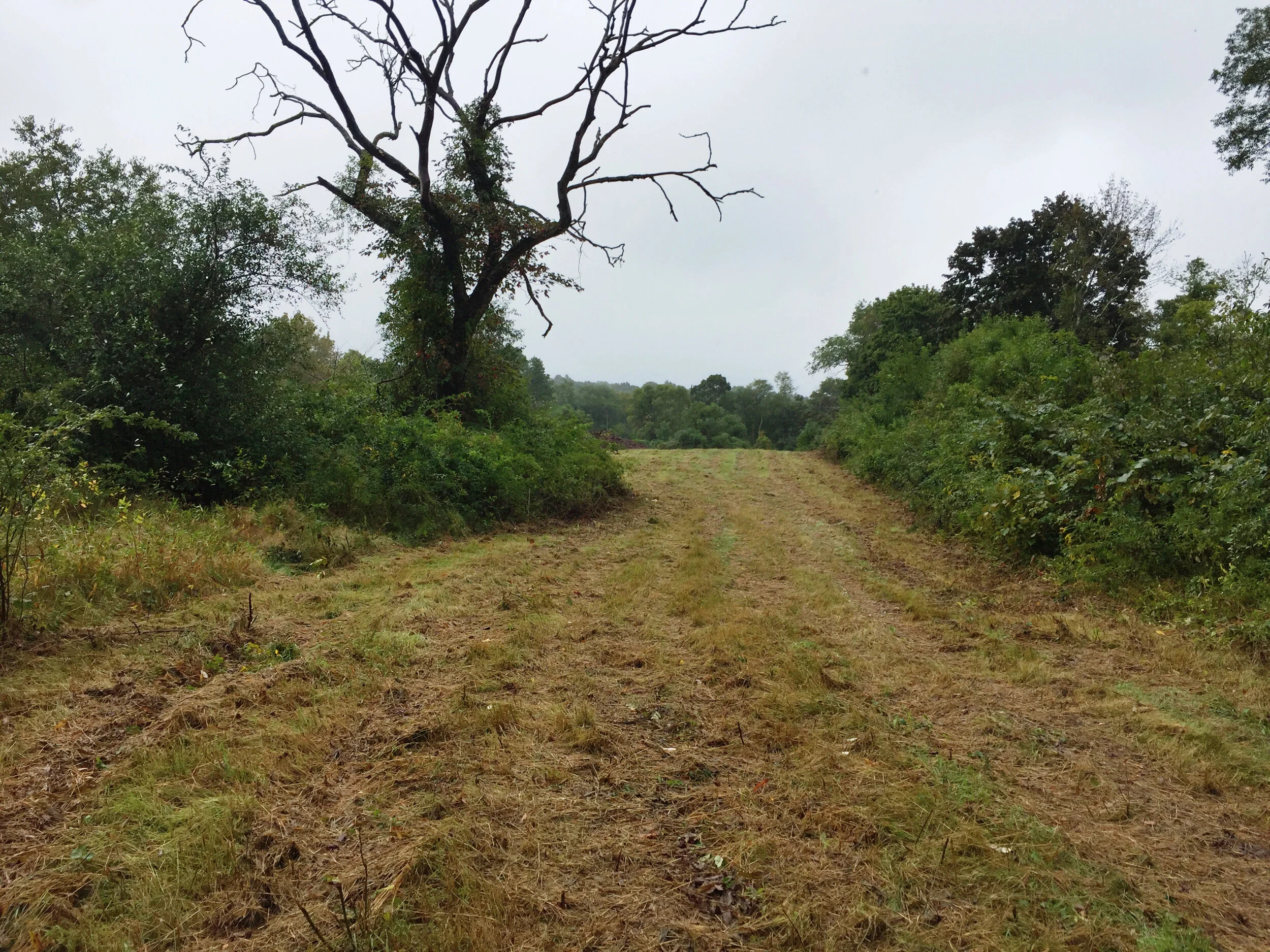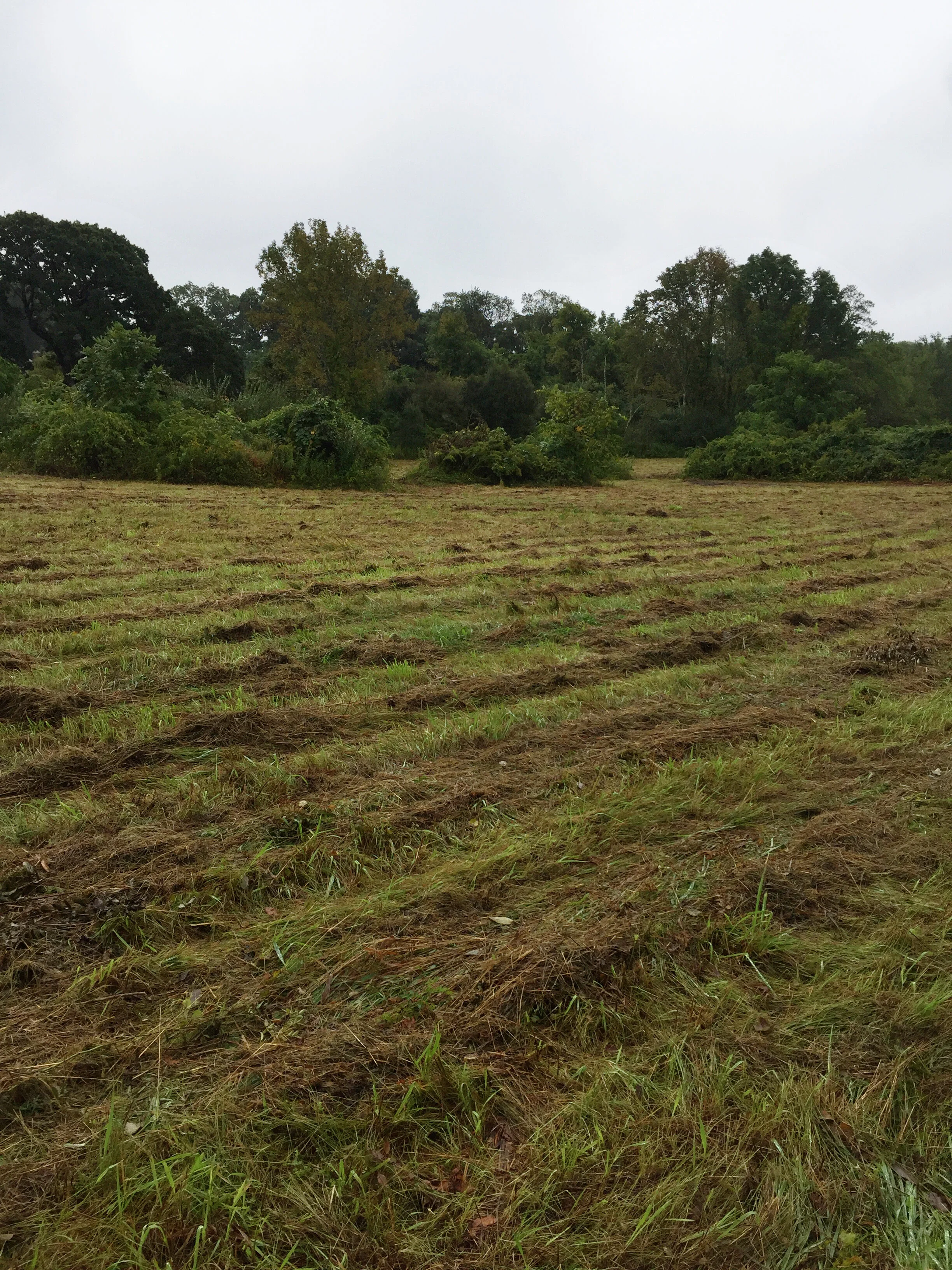Wildlands Buys the Farm (And Then Sells It)
By Land Protection Director Scott MacFaden
Land trusts like Wildlands Trust are specifically established to acquire and protect lands possessed of important conservation values such as scenic views, rare species habitat and aquifer protection. From time to time, however, land trusts can and do serve as interim holders of property, typically on behalf of other conservation entities. Wildlands has successfully completed a number of such pre-acquisitions in the past, usually in partnership with public agencies, such as municipalities and the Massachusetts Department of Fish and Game. In general, nonprofit organizations like Wildlands can mobilize more quickly and act more decisively than our public-agency colleagues when important properties are at risk of being lost to development.
In early January 2020, we completed our most recent pre-acquisition: Ja-Mar Farm in Middleborough. Encompassing 20 acres of scenic open fields along the Nemasket River, Ja-Mar Farm was a long-standing preservation priority for the town due to its commanding river views, prominent location along the lower Nemasket River corridor, high-quality agricultural soils and important habitat for multiple rare species, as identified by the state’s Natural Heritage and Endangered Species Program (NHESP).
A working turkey farm for many years, the Ja-Mar property was slated for a very different future following its acquisition by developer Elliott Schneider in 2003, who proposed a nine-lot residential subdivision to be built on the property. However, at least in part due to the recession of the late 2000’s, work toward permitting the subdivision was deferred for several years. When permitting efforts resumed in 2010, NHESP required Mr. Schneider to grant a Conservation Restriction (CR) to the town on approximately half of the property, essentially the acreage along the river and adjacent to the proposed subdivision. NHESP, which administers the state’s Endangered Species Act, had identified much of Ja-Mar Farm as rare species habitat for the eastern box turtle and several other species. At the time, it appeared the NHESP-mandated CR was the best possible conservation outcome; however, due to several factors, including the slowly recovering economy and sluggish real estate market, Mr. Schneider eventually entered into discussions with the town about possibly selling the entire property for permanent preservation. After several years and a series of appraisals, these discussions culminated in a Purchase and Sales Agreement with a closing date in August 2018.
Middleborough’s conservation agent, Tricia Cassady, spent many hours carefully crafting the project; negotiating a deal with Mr. Schneider, raising $450,000 to purchase the land (including the receipt of a sizable grant from the Land and Water Conservation Fund), and recruiting two nonprofit partners: the Cape Cod-based Native Lands Conservancy (NLC) and The Archaeological Conservancy (TAC). Both of these organizations agreed to provide substantial financial contributions to the project and to further enhance the farm’s protection by accepting an assignment of the CR from the town.
Everything seemed to be aligning favorably, but alas, there was a complication. The town already held a CR on approximately half of Ja-Mar Farm and before acquiring the property outright, the town would need to first assign the CR to another entity, or in this case, entities—NLC and TAC. However, because of Article 97, an amendment to the Massachusetts State Constitution, the town needed to obtain the approval of the Massachusetts Legislature before it could assign the CR.
Just what is the purpose of Article 97? Enacted in 1972 through a vote of the citizens of the Commonwealth, the article is essentially a procedural check on cities and towns converting designated open space land to other uses without first working through a review process. The idea is that municipally held open space is of great value and benefit to the people and ecology of the Commonwealth, and should not be divested or converted to other uses without the following actions:
“Lands and easements taken or acquired for such purposes shall not be used for other purposes or otherwise disposed of except by laws enacted by a two thirds vote, taken by yeas and nays, of each branch of the general court”
The “such purposes” are identified in the amendment as: “The people shall have the right to clean air and water, freedom from excessive and unnecessary noise, and the natural, scenic, historic, and esthetic qualities of their environment; and the protection of the people in their right to the conservation, development and utilization of the agricultural, mineral, forest, water, air and other natural resources is hereby declared to be a public purpose.”
While the town’s acquisition of the Ja-Mar property would, as a practical matter, only serve to strengthen its preservation, Article 97’s provisions still applied. The town had no choice but to work through the Article 97 process, including obtaining the approval of the Massachusetts Legislature, before it could assign the CR and subsequently purchase the property. That is where Wildlands came in. With an expired Purchase and Sales Agreement and Mr. Schneider intent on selling the property, there was a particular urgency in play. The town requested that Wildlands step in, pre-acquire Ja-Mar Farm from Mr. Schneider, and hold the property until the town had satisfied all the requirements of the Article 97 process. In order to pre-acquire the property, Wildlands and NLC each borrowed $108,500 from the Compact of Cape Cod Conservation Trusts, Inc.’s Thomsen Land Fund, with the remaining $233,000 contributed by NLC and TAC.
With the needed funding in hand, Wildlands purchased Ja-Mar Farm on October 25, 2018, and held it in safe-keeping until we sold the land to the town on January 8, 2020. The town of Middleborough is now firmly in place as the landowner, with the property subject to a CR jointly held by the NLC and TAC. This approach to land preservation is commonly known as the “belt and suspenders” method, with the property owned by one entity for conservation purposes and subject to a CR held by other conservation entities. That is about as protected as a property can be!
Be assured that Ja-Mar Farm is very much worthy of all the extra effort required to secure its permanent preservation. Today, and for many generations to come, its scenic open fields, riparian corridor along the Nemasket, and numerous rare species shall remain more or less as they are today, subject only to the inevitable cycles of natural ecological succession. Kudos to all of the project partners for the critical roles they played in ensuring the preservation of Ja-Mar Farm. Our colleague, Tricia Cassady, takes understandable pride in noting that the $450,000 needed to purchase the farm came entirely from sources outside the town — a good deal indeed. For our part, Wildlands is pleased to have had the opportunity to play a late but important role in the project. We afford a high priority to our municipal partnerships, and these public-private collaborations continue to realize significant conservation outcomes across the region.



